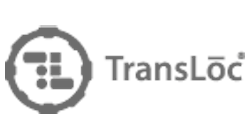It’s the holy grail of transit: endlessly useful and cost-effective transportation. It may sound simple, but consider that the vast majority of people in the United States prefer walking no more than a quarter-mile to or from public transit stops — about five minutes. Today’s predominantly fixed-route transit systems place stops at predetermined locations to maximize efficiency — often requiring much more than five minutes for existing and prospective riders to get to. It’s standard practice — but it’s also eliminating what could be a significant portion of possible riders.
Thankfully, times and technologies are advancing to meet today’s demands. Transit agencies can now provide a critical link to help riders by integrating other modes of transportation with public transit. A new breed of user-friendly mobile apps tap the power of technology to make the entire trip easy, quick and inexpensive.
Imagine opening an app and simply telling it where you would like to go, then receiving the optimized path almost instantaneously. Perhaps an Uber arrives at your location — further than five minutes away from the nearest transit stop — and ferries you to the best fixed-route stop that will fit your trip needs. Your arrival at the fixed-route stop is timed perfectly with the bus, so there’s no time wasted waiting on the side of the road. You hop on the bus and travel most of the way to your destination via the most cost-effective option: existing fixed-route public transit. At the appropriate time the app buzzes, letting you know it’s time to get off the bus, where, if necessary, another Uber is pulling up to take you the rest of the way.
This fresh vision of a commuter’s utopia stands in strong contrast to existing approaches to door-to-door demand-response transit, which essentially route buses to meet riders. This requires significant investment in service delivery, planning and operations. Mobile technology can combine the efficiency of placing high-capacity vehicles in densely populated areas with the flexibility of ride-sharing services to move riders as seamlessly and cost effectively as possible, with zero operational change on the part of the agency.
Recent data from Wake County, North Carolina shows just how effective integrating public transit with other modes of travel can be. Only 28 percent of the county’s one million residents live within a quarter-mile of a fixed-route transit stop — meaning 72 percent are more than the generally comfortable distance from transit. In effect, that means many won’t use it. If we expand that radius to 3 miles — a distance you can travel for $5.00 with Uber — the percent of the population who are now potential riders jumps to 88 percent.
Transit agencies and cities have to start looking beyond the first mile/last mile problem, and instead focus on providing solutions for every mile. The key lies in helping riders not only see the potential for a multi-modal commute, but also being able to optimize these routes for seamless, reliable transfers. Minimizing time and hassle for riders maximizes the efficiency and ultimately, use of public transit.
Doug Kaufman, CEO, TransLoc, Durham, N.C.



